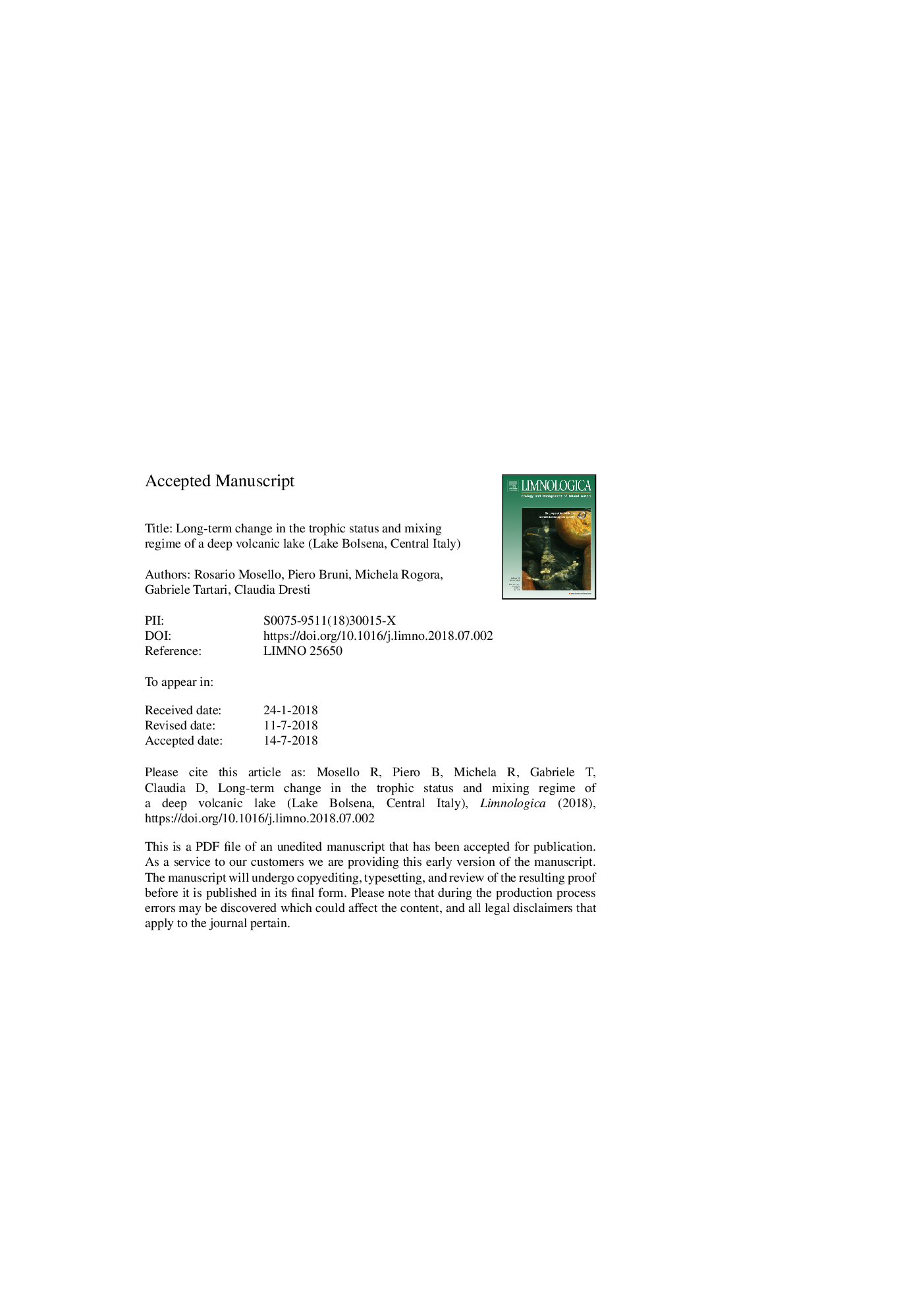| Article ID | Journal | Published Year | Pages | File Type |
|---|---|---|---|---|
| 8849354 | Limnologica - Ecology and Management of Inland Waters | 2018 | 25 Pages |
Abstract
Lake Bolsena, the fourth Italian lake for volume (9.2âÃâ109âm3), must be considered as highly sensitive to eutrophication for its extremely long water renewal time. In this paper, temperature and chemical characteristics of the lake measured in the period 2003-2017 are used to discuss the mixing pattern and the variation in the oxygen and algal nutrient concentrations, as indicators of the trophic level. In the analysed period the lake showed oligomictic characteristics, reaching the full overturn, with homogenization of the chemical profile over the whole water column, only in 4 out of the 15 considered years. A regular decrease of oxygen and increase of phosphorus concentrations in the deepest layers has been observed in the non-circulating multi-year periods. The mean total phosphorus concentration showed a regular increase, reaching values close to 16âμgâP Lâ1 in early spring 2017, mostly because of the urban discharge from the watershed, not adequately collected from an existing sewage pipe. Chemical and mixing patterns are discussed in relation with a previous study, carried out in 1966-1971, confirming the recent increase of phosphorus concentrations and the lower frequency of full circulation. The progressive deterioration of lake water quality indicates the need of prompt actions to reduce the external nutrient load and of further studies on the physical and biological characteristics of the lake, still strongly missing.
Related Topics
Life Sciences
Agricultural and Biological Sciences
Aquatic Science
Authors
Rosario Mosello, Piero Bruni, Michela Rogora, Gabriele Tartari, Claudia Dresti,
